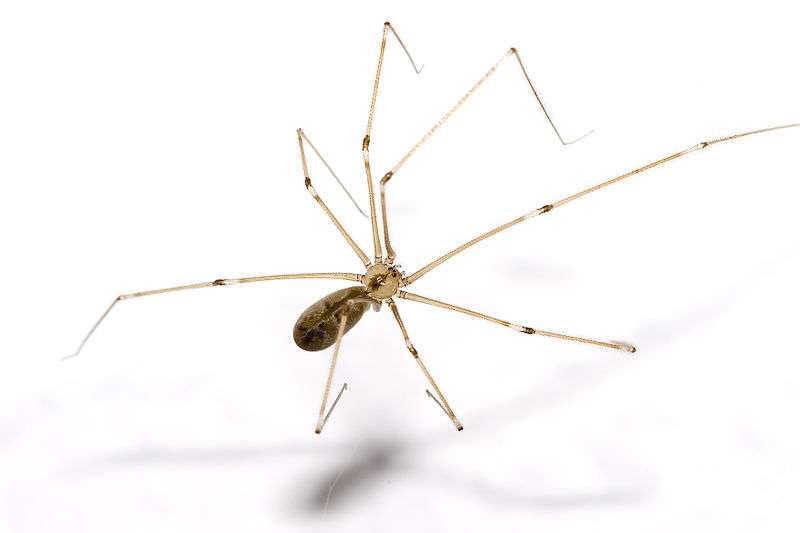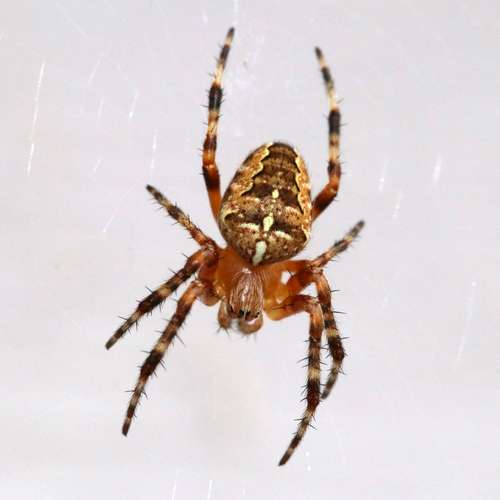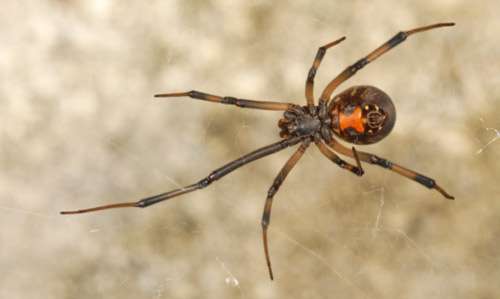
Pholcus phalangioides, also termed as the daddy long-legs spider or the long-bodied cellar spider, belongs to the Pholcidae family of spiders. Because of how much its cephalothorax has resemblance with the human skull, it is often referred to as the skull spider. Its colloquial moniker, “daddy long-legs,” should not be confused with that of the harvestman, a separate spider group (Opiliones).
Males often have a somewhat shorter body length than females, which averages around 8 mm. The spider’s legs are often five or six times as long as its body. Pholcus phalangioides frequently inhabit the ceilings of buildings, caverns, garages, and cellars.
Geographical Distribution
The species Pholcus phalangioides is widespread. The spider is a common one found in cellars across the country.
Habitat
Low-light, undisturbed areas are where Pholcus phalangiodes can be found. This spider may be found in basements, beneath stones, under ledges, and in caves, among other places. These spiders are most frequently associated with residing in corners and on ceilings in homes. In order to fit inside nearby objects, they can create their webs in odd shapes in addition to making them large, loose, and flat. Typically, their webs are horizontally orientated. On the web it spins, Pholcus phalangioides dangles upside down.
Description of the body
- With the exception of a sizable gray patch in the center of the cephalothorax, Pholcus phalangioides is a light yellow-brown color.
- The legs and body are nearly transparent. These spiders have little gray hairs covering them.
- The head has a deeper hue around the eyes. A transparent line identifies the dorsal vessel. Total eight eyes, with two smaller eyes placed in front of each of the two triads of bigger eyes. Males are six millimeters in length, compared to seven to eight millimeters for females.
- As with other spiders, these spider bodies can be split into two sections called the opisthosoma and the prosoma. Both the prosoma and the opisthosoma are often referred to as the cephalothorax and the abdomen, respectively.
- The majority of the spider’s internal organs are found in what is known as the opisthosoma, which is the back half of the body.
- The spider species is known as “skull spiders” because of the cephalothorax’s rounded, peanut-like shape. P. phalangioides‘ translucent bodies often have a grayish-pale brown hue with a patch of dark color on the prosoma’s back and a few blurred, dark spots on the opisthosoma’s dorsal side.

Feeding Habits
Other spiders and small insects appear to be Pholcus phalangioides’ preferred prey. Additionally, cannibalism has been documented in both genders. Females have been observed infiltrating the web of another spider, devouring that spider, and then exploiting the alien web to capture fresh prey. These spiders use venom to consume and kill their prey.
Lifespan and Behavior
- The lifespan of Pholcus phalangioides is approximately three years.
- P. phalangioides is a lone organism that works on trapping food in its web when it is not mating.
Importance
Role in ecosystems
Since insects make up the majority of their diet, these spiders serve a crucial role in managing the spread of insect populations.
Positive Importance for Humans
Pest population management is aided by Pholcus phalangioides.
Negative Importance for Humans
These spiders frequently reside inside homes, which is usually where people don’t want spiders and their webs.
Keeping as Pet
Nearly every house has groups of daddy longlegs spiders in the bathrooms, basements, or cellars. Therefore, there’s no need to try to pet each one separately. If you are not afraid of spiders, they can make wonderful house pets. Simply refrain from spraying insecticides on them if you intend to keep them as pets.
House
Keep your dad with long legs in an aquarium or box with a minimum length of 12 inches, and cover it with a screen so he can breathe. Give him some leaves or small plants and up to an inch of sand or mud so he can hide. Because your pet will eat fungus and decompose plant stuff, a terrarium makes a good home.
Feeding
He consumes a variety of bugs, including meat, in addition to plants and their liquids. Give him fatty meat scraps, butter, breadcrumbs, and insects to consume. He will consume ants, worms, aphids, and beetles, both living and dead.
Table





